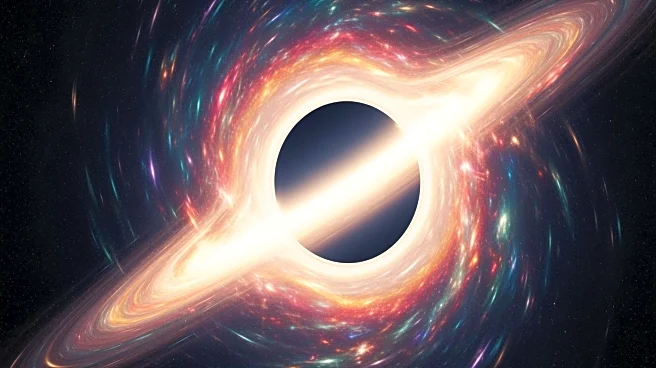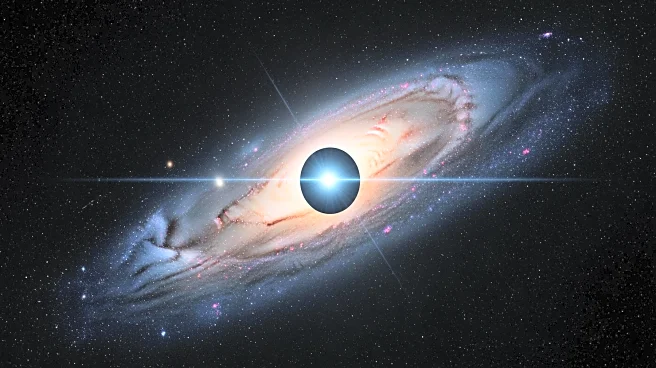What's Happening?
Scientists have detected the brightest flare ever observed from a supermassive black hole, located 10 billion light years away. This flare, which shines with the intensity of 10 trillion suns, was first
spotted in 2018 by a camera at the Palomar Observatory in California. The flare likely resulted from a large star being torn apart by the black hole's immense gravitational forces. The event took approximately three months to reach its peak brightness and has been diminishing since. The findings, published in the journal Nature Astronomy, provide valuable insights into the behavior of supermassive black holes and their interactions with surrounding matter. These cosmic phenomena are crucial for understanding the formation and evolution of galaxies, including our own Milky Way, which also hosts a supermassive black hole at its center.
Why It's Important?
The observation of such a distant and powerful flare offers a unique opportunity for scientists to study the early universe and the role of supermassive black holes in galaxy formation. Understanding these interactions can shed light on the processes that shaped the cosmos as we know it today. The research also contributes to the broader field of astrophysics by providing data on the dynamics of black holes and their influence on their environments. This knowledge is essential for developing more accurate models of galaxy evolution and the behavior of matter under extreme gravitational forces. The study highlights the importance of continued astronomical observations and the potential for future discoveries that could further unravel the mysteries of the universe.
What's Next?
Future research will likely focus on monitoring similar flares and studying their characteristics to gain a deeper understanding of the mechanisms driving these events. Scientists may also explore the implications of these findings for the formation of supermassive black holes and their role in the early universe. Continued advancements in telescope technology and observational techniques will be crucial in capturing more detailed data on such distant phenomena. Collaboration among international research institutions will be key to expanding our knowledge of these cosmic events and their significance in the broader context of astrophysics.
Beyond the Headlines
The discovery of this flare not only advances scientific knowledge but also raises questions about the ethical and philosophical implications of exploring the universe. As we learn more about the vastness and complexity of the cosmos, it challenges our understanding of humanity's place within it. The pursuit of knowledge in this field also underscores the importance of international cooperation and the sharing of resources and expertise to achieve common scientific goals. These efforts contribute to a greater appreciation of the universe and our interconnectedness with it.













